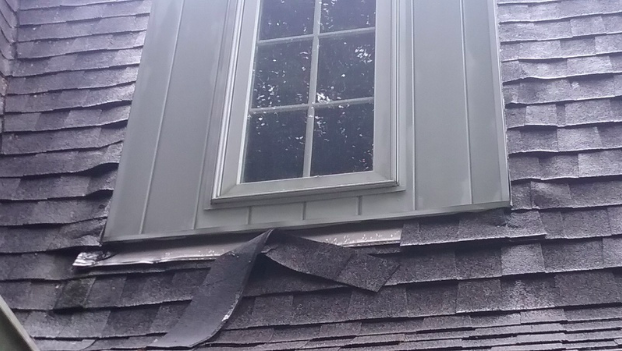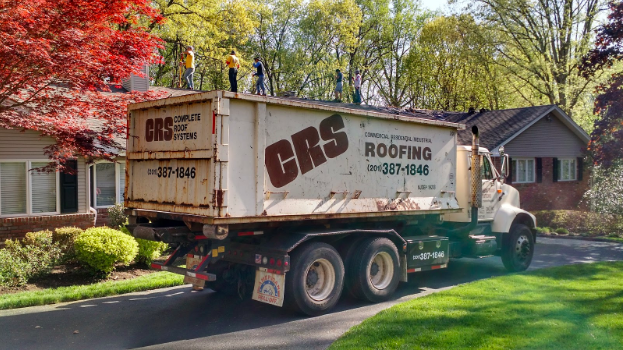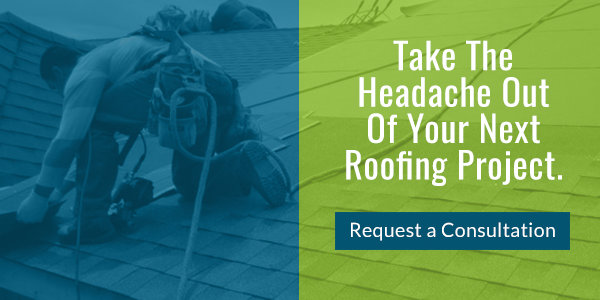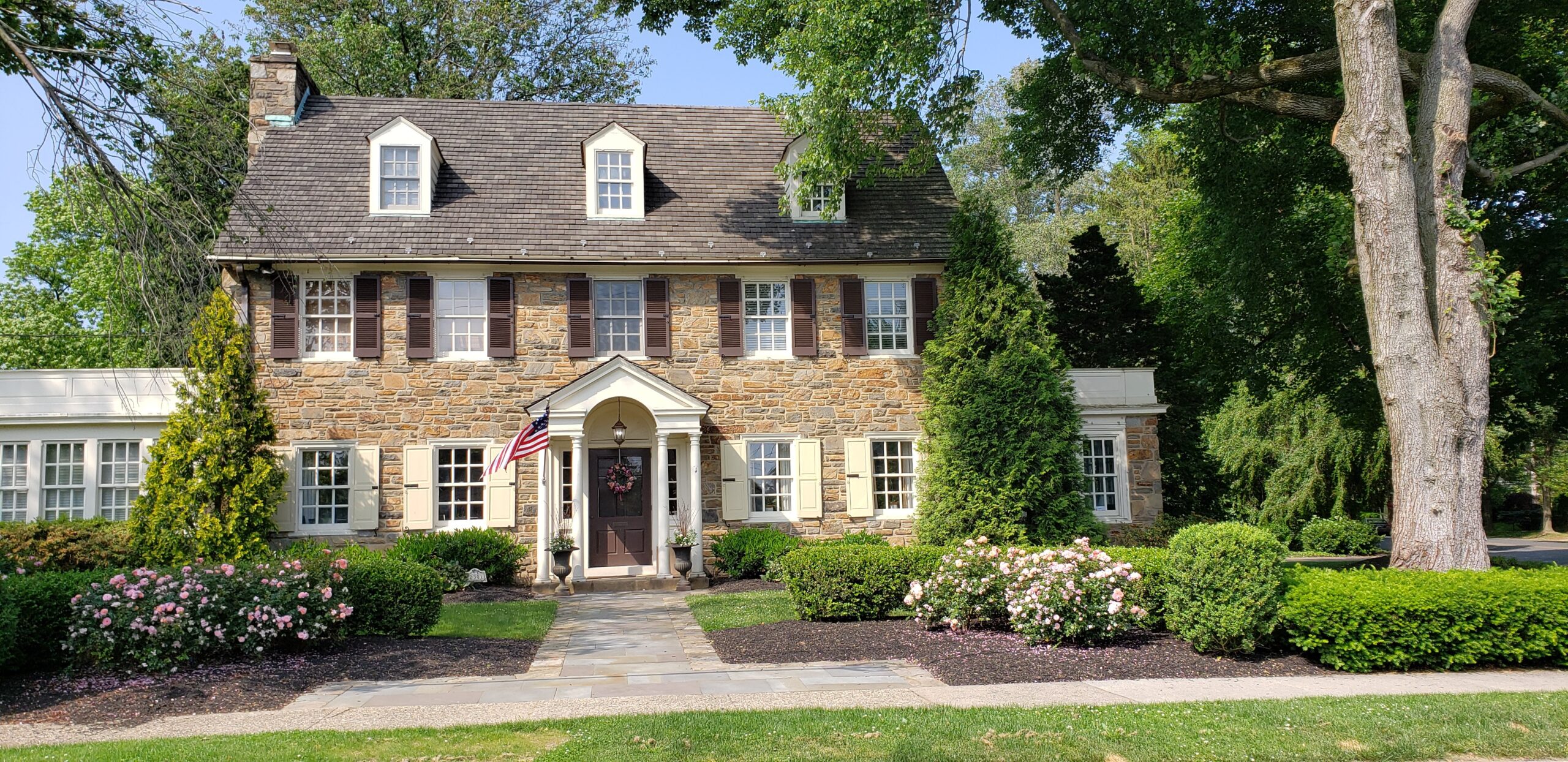Does it make sense to install new shingles over old ones? Sometimes, absolutely! In the right situation, putting new shingles over old ones saves money and helps the environment.
Although it is often necessary to remove old shingles, it’s great when you can avoid the added expense of a tear-off. Tear-offs increase labor costs and they generate waste that typically requires transportation to a landfill.
When Re-roofing Works and When it Doesn’t
Modern building codes only allow two layers of shingles on residential roofs. Since each layer of shingles weighs several hundred pounds per square, three or more layers is just too much. A New Jersey residential roof is not designed to handle the extreme weight of many layers of shingles, particularly when the roof system strains under the weight of heavy snow and ice.
If you already have two layers of shingles on your roof, everything needs to be torn off, right down to the sheathing. A tear-off is also required when the roof inspector notes multiple spongy spots and/or deteriorating decking on your northern NJ roof. A tear-off is also necessary when the second layer of shingles wouldn’t lay flat, such as when the first layer consists of highly textured dimensional shingles.
Preparing for Your Roofing Project
Roofing materials and a debris container are typically delivered a day or two before your scheduled re-roofing project in the Tristate area. It is helpful for a homeowner to be ready for the arrival of the roofing crew. It is ideal to move patio furniture and other personal items that are in line with the edge of the roof. This makes it easier for the crew to clean up any debris.
Re-roofing: Step by Step Process
There is more to the installation of a new layer of shingles than meets the eye. Consider the many steps that are required of your NJ roofing contractor to complete a proper installation.
Clean the roof
If there is debris on your roof, it is important for the crew to sweep it away before the re-roofing gets underway. You don’t want anything caught between the old and new layers of shingles.
Remove ridge caps and obstructions
Before the roofing crew can start putting new shingles over old ones, they must temporarily remove obstructions like air vents and pipe flashing.
Repair damaged areas
Your new roof is only as good as what lies underneath it. Therefore, it is important that your roofer fix any problem areas. It’s sort of like the highway repair work that happens before repaving.
For example, damaged underlayment and sheathing must be repaired or replaced before the re-roofing gets underway. When leaks go undetected, there may be sheathing that is rotting or otherwise deteriorating. In these areas, it is necessary to cut out the bad plywood or OSB before the installation of new underlayment and shingles.
When putting new shingles over old ones, it is important to have a relatively smooth surface to work with. For example, if a shingle is cracked, torn or broken, it is important to replace the shingle or to use roofing cement to secure it.
Install ice and water barrier
When water backs up behind an ice dam, it can work its way up under the shingles and possibly into the sub-roofing. Therefore, northern NJ homes often benefit from the addition of an optional waterproof barrier along the eaves and anywhere ice dams may form. It is often possible to safely install this waterproof barrier right over your existing shingles.
Install new flashing
The proper installation of new flashing is important. For example, drip flashing protects the edges of a roof, while valley flashing promotes the proper flow of water off the roof.
Add a starter strip
Starter strips are the first rows of shingles installed along the bottom edge of the roof. Starter strip shingles feature a high-quality adhesive that locks your shingles in place to minimize the chance of shingle blow-offs.
Cut and install new shingles
Any installation of the new shingles must follow manufacturer recommendations. For example, there must be an adequate amount of overlap, and the fasteners must be properly positioned. It is important to use experienced roof technicians who know how to cut new shingles to precisely fit around vents and other roof penetrations.
Install new ridge caps
To finish off a new roof, special shingles called ridge caps are used along the hips and ridges. Ridge caps are multi-layered, heavy-duty shingles designed to protect this vulnerable area of your roof.
Taking Care of Your New Roof
Once the crew is done putting new shingles over old ones, it is best to have your roof professionally inspected once or twice a year. Season after season, you want to ensure that there is no storm damage you can’t see from the ground. You also want to find out right away if a warranty claim is ever necessary.
Your roofer can also perform seasonal maintenance to extend the life of your new roof. Occasional cleaning removes debris, moss growth and algae buildup. Replacing missing or broken shingles prevents minor issues from becoming major ones.
Contact CRS for Prompt Assistance
For more than 45 years, CRS has taken care of the roofing needs of northern NJ homeowners. GAF, the largest roofing manufacturer in North America, has named CRS a Master Elite Contractor. Fewer than three percent of the nation’s roofing companies achieve this distinction.
As a Master Elite Contractor, CRS is authorized to offer its customers the very best manufacturer warranties in the business. Ask us about the special features of GAF Golden Pledge and Silver Pledge warranties.
Whatever your roofing need, we’d welcome the opportunity to send our certified roof inspector out to take a look at your roof system. For prompt, friendly help, please contact us.







